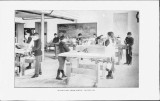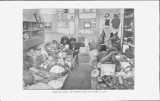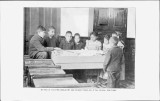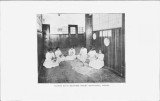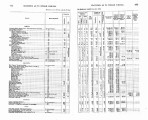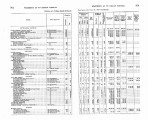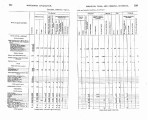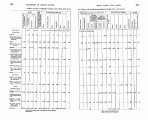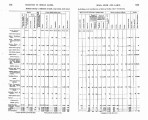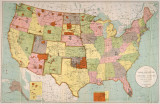| OCR Text |
Show 384 REPORT OF TEE SUPERINTENDENT OF INDIAN SCHOOLS. period. The growth of Indian education and its achievemente should not be judged by the same standad which would be used in estimat-ing the success or failure of a system M education adapted to the children in civiliiation. Frequently the home training of the white child has made easy its instruction to a point to reacL which may require years of patient effort on th part of the teacher of the young Indian. The cooperation of the parents is no small element in the success of elementary instructors. This cooperation has heretofore been lacking in Indian schools. That its influence is partly shown now is due to the fact that one or both of the parents of many of the younf Indian children entering school to-day have themselves had the bene ts of the training of the schools. In most cares, however, in attemptin to educate Indian children much time and patience must be expenf e d in creating a desire to learn,and in arousing sufficient interest on the part of the pupil to induce him to wish to learn or even be willin to learn. I am gyad to be able to state that better methods of teaching are prevailing throughout the schools. The teachers are beginning to study the Indian and to apply the results of their study. The are beginning to see that methods of teaching used in the public sc~ools must be modified and adapted to meet the needs of the children. of a child race, who must first be taught to understand our language. The Indian teacher must deal with wnditions similar t~ those which confront the teacher of the blind or the deaf. She must exercise infinite patience in all her teaching, which at first must be done objec; tively. Shemust present objects that are familiar to thechildran, iv ing them the English names, and constant repetition is necessary; tied lead them gradually to representations of then surroundings and thin s they are well acquainted with in their neighborhood; and as genera f y the child upon entering school finds many strange things-strange surroundin s,strange faces, and a stran e language-fear and sus-picion take % old of him, and much time an% patience on the part of the teacher is required to get him to feel at home and talk freely. Hi starting point will be oneword of English; for instance, the Sioux boy usually knows the sky above him as "mahg-yah" and the stars as "wi-can-hpi," and when he has learned the ngliih words "sky" and "stars" he can go on to others. Again, he can exchange his Sioux word "po-stan" for our English word "hat," and the teacher can then reach out to other objects and i d m familiar to him. His English vocabulary will reveal his surroundings to him. Give him only at first such words as he wilr have everyday use for. After he has learned to speak a word, the written form can follow. The teacher must remember that it is only by constant re tition and ceaseless grinding away that the child acquires a working p nowledge of English. Moreover, in order to teach the Indian child anythin it is neces-sary to have him leave his home and attend school. is has fre-quently been a difficult task. Parental love is one of the strongest attributss af the Indian character. The Indians dislike to part with their children even for the rtion of the day required for their attendance at da,y schools, an 8" frequently bitterly o pose their being placed in boarding and training schools. This fee!ng is gradually wearing off, largely through the influence of returned students, many of whom are not only wikn but anxious that their children should have the same advantages w % ich they received. |













































































































































